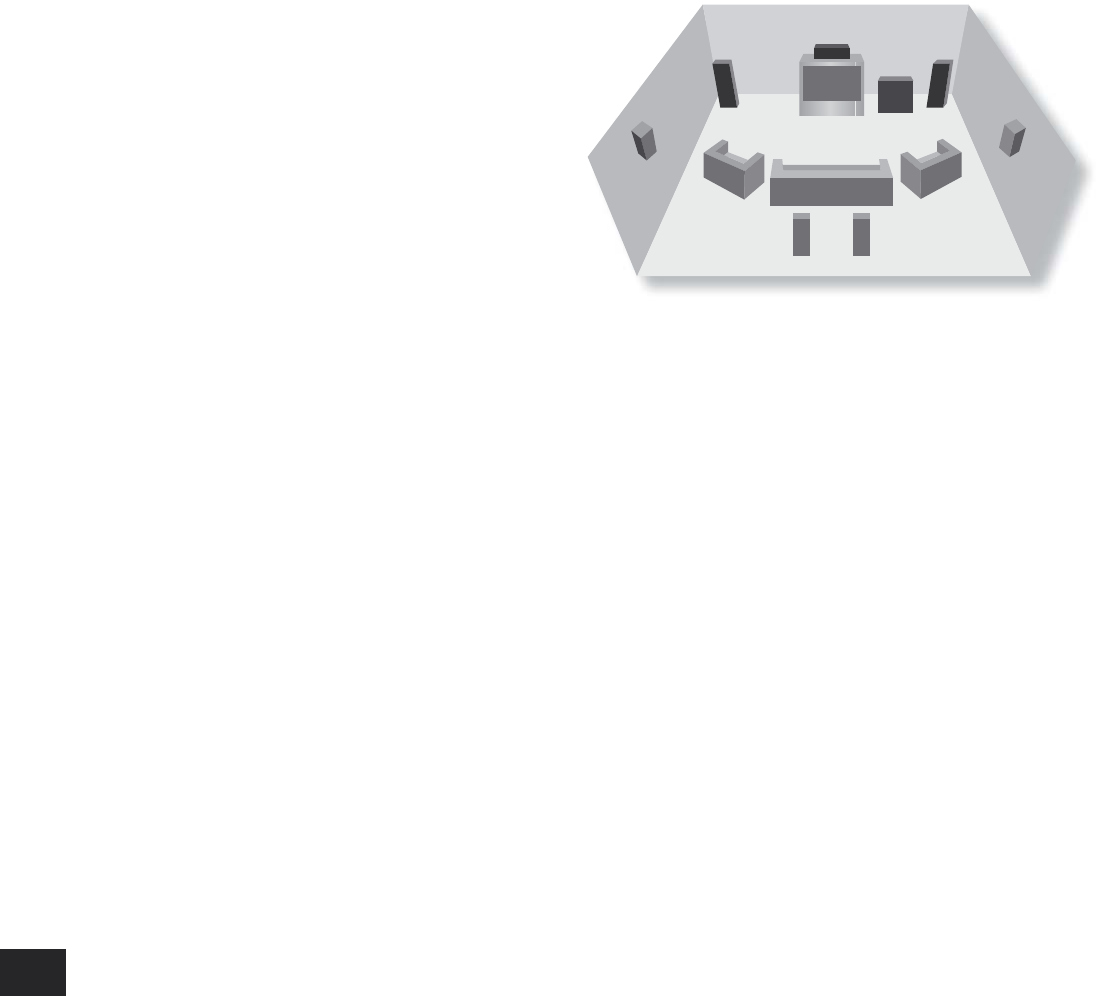
P1000
E-4
English
P1000
E-5
Getting started with your P1000
Introduction
The P1000 multi-channel power ampli er is built to Arcam’s traditional high quality design and
manufacturing standards. It is an extremely high-performance ampli er, offering up to 135W per
channel. While obviously well-suited to multi-channel home cinema ampli cation, additionally it
provides superb stereo performance with two-channel sources. The P1000 is an ideal partner for the
Arcam DiVA AVP700 Pre-amp Processor.
Each of the ampli er modules within the P1000 is identical, so each channel of ampli cation has the
same performance. The P1000 has input and output phono sockets for the signal being fed to each
channel, which allows the signal to be passed on to additional power ampli ers, if required, to drive
loudspeakers in other rooms or to bi-amplify any channels. If the P1000 is being used to drive a ve-
channel surround sound system, for example, then the spare two modules (‘L surround rear’ and ‘R
surround rear’) could be used in conjunction with the main (‘L front’ and ‘R front’) modules to bi-amplify
suitable front left and right speakers.
We anticipate that the P1000 will give you many years of home cinematic enjoyment.
Speaker Installation
The P1000 allows connection of up to seven loudspeakers. All speakers, with the exception of the
subwoofer, should be arranged around your normal viewing/listening position (see diagram). The
subwoofer can be placed almost anywhere and we recommend experimenting with it in various
positions to obtain the best result.
Position your front left and right speakers to achieve a
good stereo image for normal musical reproduction. If
they are placed too close together there will be a lack
of spaciousness. Alternatively if they are placed too far
apart the stereo image will appear to have a large hole
in the middle and will be presented in two halves.
The centre speaker allows for a more realistic
reproduction of dialogue and centre sounds as well
as wider and better imaging for stereo effects and
background sounds for home cinema use. Do not
compromise on the quality of your centre speaker as it
carries all the dialogue for a home cinema system.
The surround left and right speakers reproduce the
ambient sound and effects present in a multi-channel
home cinema system.
The surround back left and surround back right speakers
are used to add extra depth, a more spacious ambience and sound localisation.
A subwoofer will improve the bass performance from your system. It is useful for reproducing special
cinema effects, especially where a dedicated LFE (Low-Frequency Effects) channel is available, as with
Dolby Digital – or DTS Digital Surround–encoded discs.
Cables
We recommend the use of high-quality screened analogue, digital and video cables as inferior-quality
cables will degrade the sound and picture quality of your system. Only use cables that are designed for
the particular application as other cables will have different impedance characteristics that will degrade
the performance of your system (do not use audio cables to carry video, for example). Speaker-cable
length should be a short as practically possible, but pairs of cables (the cables to the front-left and
front-right speakers, for example) should be of similar lengths.
We advise routing the interconnect cables, speaker cables and mains-power cables away from each
other to minimise interference.
If you require help chosing suitable cables, please contact your dealer or installer.


















